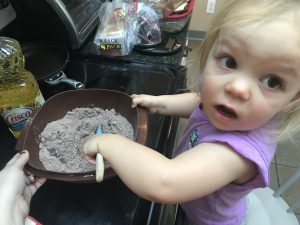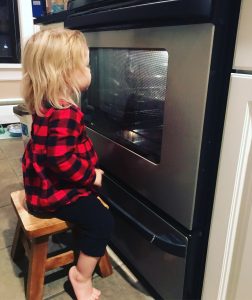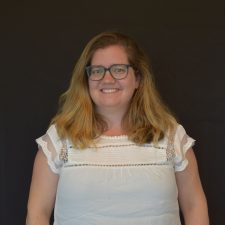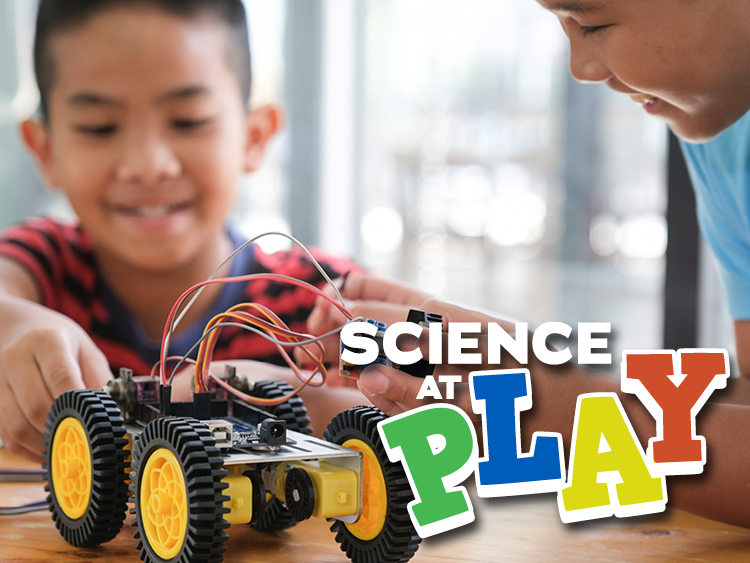My daughter is freshly two. Like many parents, I’m trying to keep her open to a life in the sciences. To be honest, I’m also trying to keep her open to a life in the arts, literature, languages, historical perspective, emotional intelligence, and everything else… and of course, she mostly loves to play basketball. But still, I’m trying to keep bringing her back to science, whenever I can.
I’ve learned from my work at the Science Center that seeing a child through to a lifetime of scientific passion isn’t about convincing them that science is cool. Instead, it’s about keeping them engaged with curiosity and experimentation that they’re born with.
Here’s a sobering study: back in the 90’s, Dr. George Land and Dr. Beth Jarman developed a test (at NASA’s request) designed to identify the capacity for divergent thinking and creativity. They discovered a steep– to many, shocking– decline in creativity from age 5 to adulthood.
When measuring how many children were able to exhibit “genius-level creativity”– the ability to think up new, unique ways to solve problems– here’s what they found:
- 98% of 5 year olds were considered genius-level creatives.
- 30% (10 years old)
- 12% (15 years old)
- 2% (out of a sample size of 280,000 adults)
Clearly, my job as a parent is not to teach her how to be creative, but to invite her to experiment at every possible turn.
My daughter has been a scientist for a long time now. Past inquiries include: will this spoon fall off the table? (Physics.) Is this cat soft? (Biology.) Can I touch the moon? (Astronomy.) Is this dirt food? (Earth Science) Is this soap food? (Chemistry) Is this stuffed dinosaur food? (Paleontology) Is this food food? (Food science) She’s very interested in food.
Keeping my daughter curious is not only a project for her, but for me. Many, many parents, no matter how many kids they have or what ages they are, are deeply entrenched in overwhelm. They’re just trying to get through the day with as little mess, chaos, and disaster as possible. And yet– mess, chaos, and disaster are a great space for a little scientist to experiment.
So, what was our science activity for the weekend? I needed something messy. Something that would take a long time. And something where we would certainly, definitely, without question fail.
We made a box of brownie mix.

Science: messy and delicious!
Four ingredients (eggs, water, oil, and the mix), three kitchen items (spoon, bowl, pan), and three steps (prep, mix, bake). How long could it take?
My scientist and I headed to the kitchen for setup. After a discussion on oven and stove safety, I lifted her up to hit the buttons for preheating. Then it was time to get messy. We set up all of our supplies on the kitchen floor so that she could easily reach.
Together, we shook the brownie mix into the bowl. Then it was time to use those motor skills: holding a measuring cup while I poured water into it. She poured that cup into the mix, and using her Olaf spatula, she experimented with the shifting texture of the materials. Not long after came the oil. We did these three ingredients first to allow for some taste-testing. We experimented with stirring slow and fast. She also experimented with running away for brief periods of time while her mother did all the work.
Then I did something that even I, the world’s most lax parent, felt a little tense about: I let her crack the eggs.
Sitting behind my daughter like Patrick Swayze in Ghost, I held her hands in my hands. As she finally got the chance to use her prodigious smashing skills, I used the opportunity to show her just how much force was (un)necessary to crack an egg. Crack, crack, crack. We picked out a few shells and stirred them in.
After that high point, I put her on dish duty (standing on a chair next to the sink playing with the water with the dishes beneath her) while I dealt with transferring the mixture and sliding it into the oven at a moment when she was preoccupied and least likely to attempt to climb in.
Baking provides practice in a little-known yet crucial part of a scientist’s life: waiting.

Waiting is the hardest part
She waited for a full half-hour. She sat in front of the oven, watching her brownies sit there in the pan, transforming before her eyes. Then she had to wait again for them to cool down.
Once they were finally ready, she was delighted. She took one small bite of one corner, said yum, and ran away to play.
She already knows all the important things: process, not product. Time together, not perfection. And that there are many, many ways to smash an egg, some of which only two year old genius-level creatives can find.
Parents: we at the Connecticut Science Center know that the pressure to deliver STEM education and activities can be overwhelming. If you don’t consider yourself a scientist, or creative, you may have no idea where to turn.
Turn to the world. Science has made and touched everything in your home. Spend time with your child smashing, building, mixing, throwing, dropping, playing. Curiosity begins with you. As your children wonder about their worlds, you don’t have to answer every question. You just have to wonder, too.

Julia Pistell is the Grants Manager at the Connecticut Science Center and one of the founding members of Sea Tea Improv. Her written work can be found in Book Riot, Shondaland, The Hartford Courant, the Star-Ledger, The Coachella Review, WNPR, New England Public Radio, This I Believe, and more. She is also the host of the popular podcast Literary Disco, which has been featured in The New Yorker, the Washington Post, The Rumpus, and many more outlets. Even more tidbits about Julia can be found at www.juliapistell.com.



